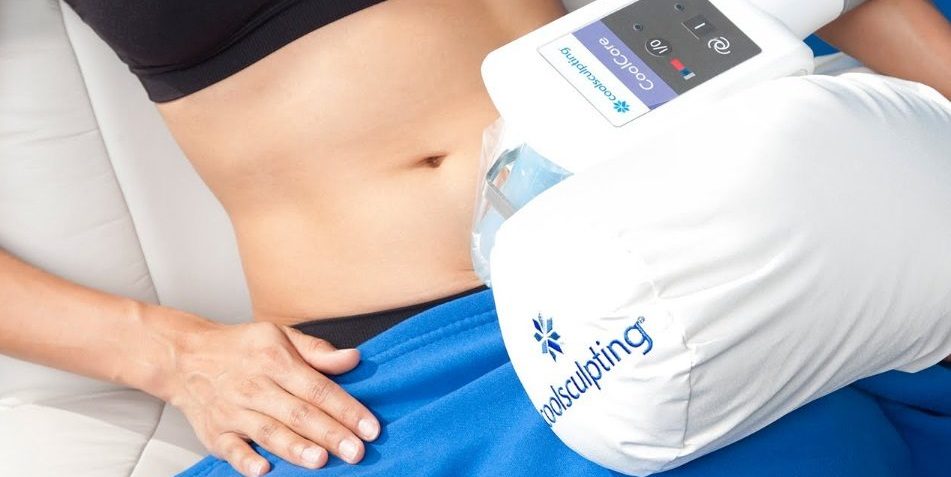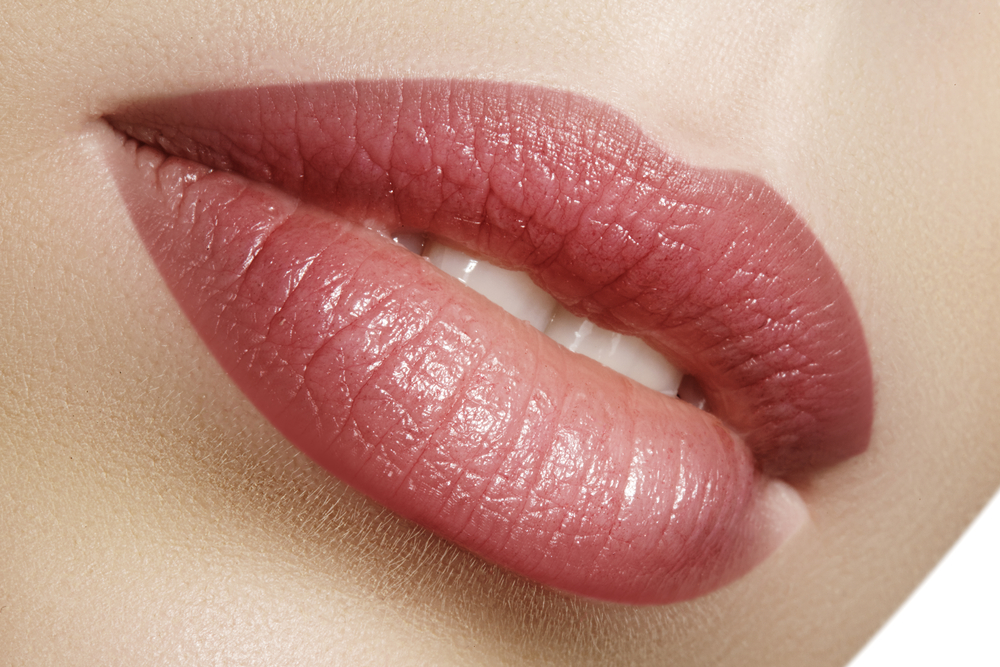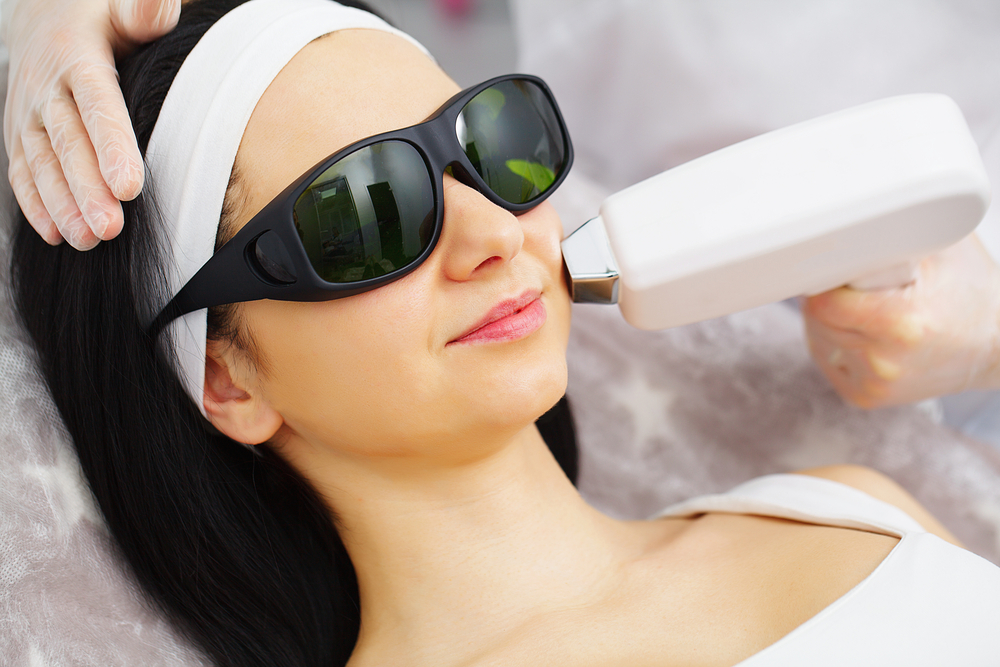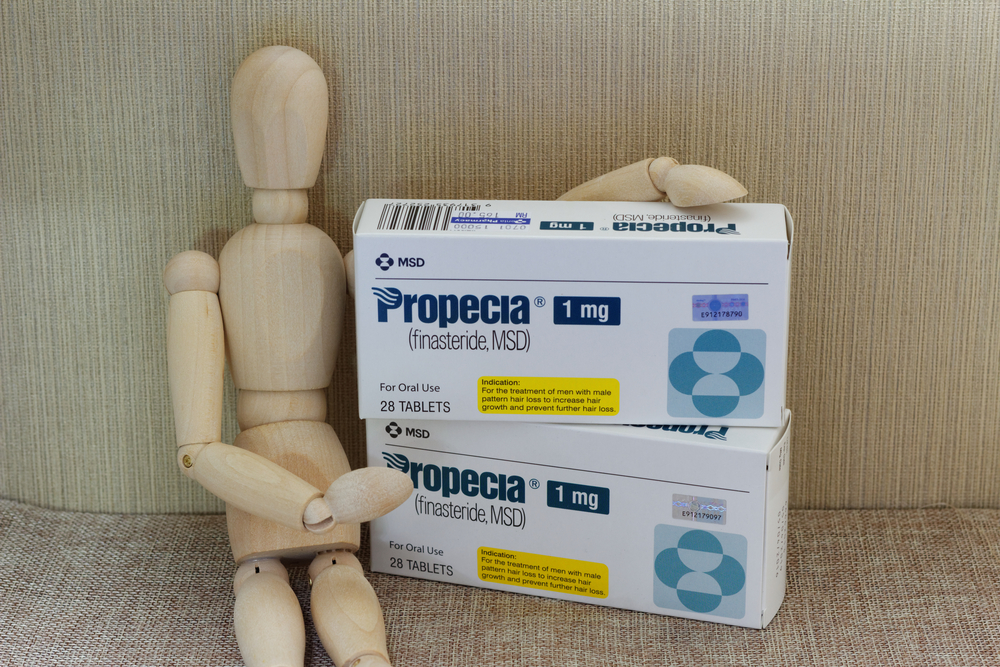In recent years, the overwhelming popularity of liposuction has led to the development of a variety of non-invasive procedures to help address unsightly and unwanted extra fat.
Research has included radiofrequency treatments, low-level laser, high-intensity focused ultrasound, and of course, cryolipolysis, more commonly known as CoolSculpting.
Each of these procedures utilizes a different mechanism to eradicate fat, but CoolSculpting has not only been available the longest, it is also the best researched of these commercially available procedures.
What is CoolSculpting?
CoolSculpting came into creation via an interesting fluke of human biology called popsicle panniculitis. Several years ago at Harvard University, two doctors, Dieter Manstein and R. Rox Anderson, noticed that children’s cheeks would form dimples after eating popsicles.
They soon realized that the cold from the treat froze and eliminated small pockets of fat cells, while leaving the skin and surrounding tissues undamaged. This revelation became the driving force behind the development of CoolSculpting.
Most suitable for smaller, localized areas of fat (like stubborn love handles), CoolSculpting uses rounded paddles that come in four different sizes to create a suction effect on your skin. As the temperature lowers to nearly 4 degrees Celsius, the fat cells below the pads crystallize and die, while your skin and the surrounding tissue remain unaffected.
The procedure is completely noninvasive and the setting is so relaxing that many patients bring a book, watch some TV, or even catch a short nap — all while the machine is working. Over the course of the next several weeks, the body’s own natural processes works to remove and dispose of the dead fat cells. And best of all, because adults don’t generally grow new fat cells, they’re gone forever!
Which areas of the body can CoolSculpting treat?
CoolSculpting uses a vacuum suction applicator to draw distinct areas of pliable fat between the cooling paddles of the device. This limits the procedure to areas of stubborn fat bulges, including:
- Double chin
- Bra line fat
- Enlarged male breasts caused by fat
- Back fat
- Abdomen
- Fat under the buttocks (“banana roll”)
- Flank or sides ( “muffin top” or “love handles”)
- Hips
- Inner and outer thighs
Unfortunately, due to the design of the CoolSculpting machine, larger and flatter areas, such as the shoulders, can’t be treated. Nevertheless, emerging advances may change this limitation in the future.
Does CoolSculpting tighten loose skin or treat cellulite?
Unfortunately, CoolSculpting doesn’t have any effect on skin laxity. The treatment is designed to target the fat cells specifically, leaving the skin and surrounding tissues completely unaffected.
CoolSculpting isn’t designed to treat cellulite either, although other energy-based procedures can also be used to stimulate collagen production and improve the appearance of cellulite. For instance, radio-frequency devices can be easily paired with CoolSculpting to help you reach your goals.
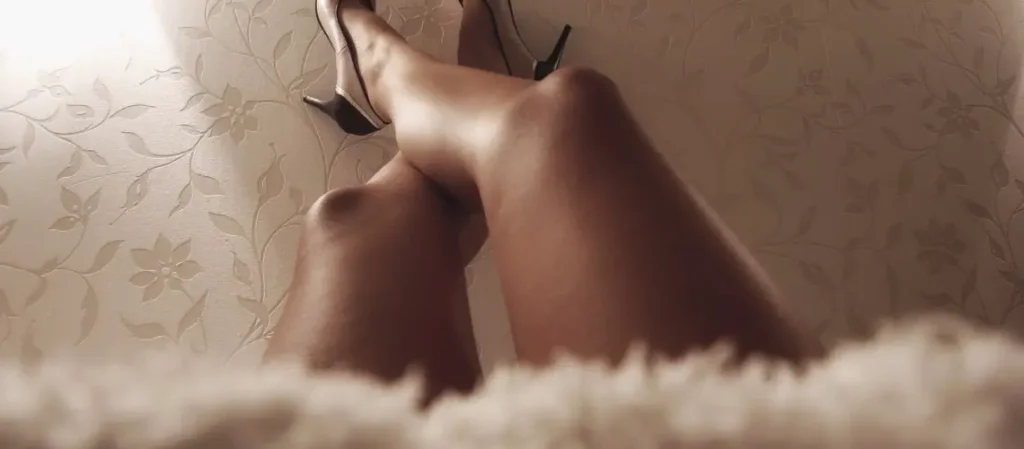
RELATED: Cellulite Removal — What Works, What Doesn’t
Who is a suitable candidate for CoolSculpting?
CoolSculpting isn’t for everyone. The procedure is designed for people who are only looking to lose stubborn fat that can’t be dispelled with exercise or diet: it’s most definitely not an alternative to healthy weight loss.
There are many factors to consider before committing to CoolSculpting.
The best candidates for the procedure:
- Are in good health.
- Are within 20 to 30 pounds of their target body weight.
- Have healthy skin with good elasticity.
- Have “pinchable” fat that can be pulled from the body.
- Have discreet and distinct pockets of fat with well-defined borders.
There are a handful of medical conditions that could prevent an individual from undergoing the CoolSculpting procedure. These existing medical conditions can make the treatment riskier:
- Cryoglobulinemia is a condition in which the blood contains a lot of particles that clump when cooled below normal body temperature. These clumps can cause blood clots and lead to much more severe conditions, including stroke.
- Paroxysmal cold hemoglobinuria can cause mild to severe anemia if the sufferer is exposed to cold temperatures. In severe cases a blood transfusion may be needed to treat it.
- Patients with conditions that cause hypersensitivity to cold, such as Raynaud’s disease, pernio, or chilblains, should avoid CoolSculpting.
If you suffer from any of the above conditions or have any other health concerns, please inform your provider prior to treatment.
Can the treatments be repeated?
In a word: yes. Typically, a single treatment results in shrinkage of about 20-25% in the targeted area.
Full results usually take about two to three months, because it takes your body that long to naturally process and dispose of all the crystallized fat cells. It’s usually at about this point that a repeat treatment can be considered.
A single treatment may be sufficient in achieving your goals, but on average, most people need two or three.
Where does the fat go?
Fat is held inside sack-like cells that grow and shrink as you gain and lose weight throughout your lifetime. During the CoolSculpting procedure, up to 25% of these cells in the targeted area are killed, allowing them to release the fat they have been storing, which is slowly reabsorbed over a few weeks.
Once your body has metabolized the crystallized cells, they are gone forever. Fat cells do not grow back, so once they’re gone, they’re gone for good.
However, it’s important to understand that CoolSculpting is not a weight loss procedure. Freezing fat cells simply causes them to release their contents so they can be more easily burned off. Your weight will not change as a result of CoolSculpting alone — you have to eat right and exercise to see the best results.
Also bear in mind that the remaining fat cells in the treated area, as well as throughout your body, are still quite capable of growing in size with the accumulation of new fat. Massive weight gain may also cause fat cells to split in two.
Is CoolSculpting safe?
Cryolipolysis has been performed thousands of times, and has been proven to be extremely safe. As a completely noninvasive procedure, CoolSculpting enjoys significantly reduced risks compared to other fat reduction techniques.
- No anesthesia is required.
- No incisions are made at all.
- There is no recovery time.
Of course, no procedure is completely without risk. Most people don’t experience any side effects following the procedure, but there are a few common issues that can develop shortly after treatment, including:
- Temporary numbness.
- Mild soreness.
- Mild bruising.
CoolSculpting is usually a pain free experience, with the exception of these possible mild side effects. However, on rare occasions other more severe side effects can present themselves.
Approximately 1% of patients will require pain medication and experience numbness for a week or more. You can compare this with almost 100% of patients who experience pain and discomfort following liposuction. Since the device utilizes suction, a “hickey” like effect can also occur with more pronounced bruising, though this is uncommon.
Can I get CoolSculpting while pregnant?
It’s unlikely that the CoolSculpting fat freezing technique would cause any effect on a pregnancy, but it hasn’t been studied in pregnant women at all. For this reason, we do not recommend having the procedure performed if you are pregnant. In fact, it’s probably best to refrain from any kind of body contouring procedure if you are even planning on getting pregnant within six months, just to be safe.
If you go through the procedure only to find out later that you are in the early stages of pregnancy, don’t worry. The treatment shouldn’t have any effect on your early pregnancy at all. However, you may not be able to see your results because you’ll be gaining pregnancy weight.
That being said, CoolSculpting has shown great results in new mothers having trouble losing that last bit of pregnancy fat through diet and exercise alone.
How should I prepare for my CoolSculpting treatment?
CoolSculpting is an extremely safe, entirely noninvasive procedure, so there’s very little that you need to do to prepare yourself. However, there are a few things you can do to make sure you are as comfortable as possible prior to your treatment.
1. Check with your provider if you’re a good candidate.
CoolSculpting is not a weight loss tool. It’s for those stubborn fat pockets that you’ve tried to eradicate without success. The CoolSculpting manufacturer recommends that you should already be within about 25 pounds of your ideal weight before undergoing the procedure.
To enjoy the most effective results, you’ll also need enough pliable fat to be manipulated by the handpiece of the CoolSculpting device (the handpiece, however, does come in several sizes). Your unwanted fat should be distinct, with clear borders for the best results.
Ideally, your skin should be healthy, with good elasticity. If you have an active infection or your skin is broken in the target area, you’ll need to postpone your treatment.
Lastly, you should be in a state of good general health.
2. Find out how many treatments you’ll need.
Most patients undergo three treatments to achieve their aesthetic goals, with a two- to four-month wait between each treatment.
During your initial consultation and assessment with your practitioner, you’ll be able to get a better idea of how many treatments you’ll need.
3. Avoid taking anti-inflammatory medications.
Unless you’re taking Advil or Ibuprofen for a specific medical treatment or condition, it’s best to avoid any anti-inflammatory medication before your treatment.
CoolSculpting can sometimes result in bruising. Anti-inflammatory medications can increase the odds of this happening, and also exacerbate the severity of the bruising. That being said, it is always important to consult with your doctor before discontinuing any of your regular medications.
4. Prepare yourself for some minor pain.
Anecdotal evidence reports that roughly 9 out of 10 CoolSculpting patients do not experience any pain at all. However, approximately 10% of patients do experience some pain, usually for a couple of days following treatment.
Based on these statistics, it’s unlikely that you’ll feel much pain, and it’s likely to fade quickly if you do. But it’s always a good idea to prepare for it anyway. You can help control pain with medication like Ibuprofen, and Spanx or another compression garment. In the most extreme cases, a prescription strength pain medication may be necessary.
5. Get relaxed prior to treatment.
Being comfortable and relaxed helps ease the mind and body before any procedure, and making sure you are wearing appropriate clothing is one of the easiest ways to stay comfortable. On the day of your treatment you should wear loose fitting clothing. Many patients feel comfortable in a baggy, button-up collared shirt.
You should also wear inexpensive undergarments and consider bringing an extra set to change into. A gel is applied between the CoolSculpting applicator and your skin, so your clothes may get wet.
6. Don’t forget to bring some entertainment.
Depending on the specifics of your treatment, each session can last several hours. If doing nothing for a few hours doesn’t appeal to you, then consider it a perfect time to catch up on a good book, work, email, or your favorite TV show. Many patients even feel comfortable enough to get some beauty sleep.
Overall, there is very little that you need to do to prepare for your treatment when compared to more invasive surgical procedures. In fact, it’s not unheard of for people to come in for a consultation, and stay for a treatment right there on the same day. Just try to make yourself as comfortable as possible in order to have the best experience.
What can I expect on the day of my treatment?
Once you have had a consultation with a professional and decided to commit to CoolSculpting, your procedure will progress through these steps:
- You’ll be shown to your private treatment room where you’ll remove your clothing from the area to be treated.
- You’ll be photographed for documentation purposes and your skin will be marked to best guide the CoolSculpting device. At this point in the process you can simply sit, get comfortable, and relax.
- When you’re ready to begin, a gel barrier will be placed over the area to be treated. This gel layer is a thin membrane that varies in size depending on the target area.
- Next, the actual CoolSculpting machine is applied directly over the gel. Most applicators use vacuum pressure to draw the specified area up and between a pair of cooling pads.
- Once the suction is secure, the cooling process begins. With the aid of modern technology and precisely controlled cooling, the pads lower the tissue to near freezing temperatures. This low temperature has been proven to specifically target and destroy fat cells, while leaving the surrounding skin and muscle tissues completely unharmed.
- The optimal temperature is 4°C. Through this natural cooling process, the fat cells in the affected area crystallize, die, release their stores of fat, and are dispelled by your own body over time, similar to other dead or damaged cells.
- When the cooling portion of the treatment is complete, the area is vigorously massaged for a few moments, and then you’re done.
At the completion of your treatment, don’t be surprised if you can actually feel the crystallized fat through your skin — patients often describe it as similar to a brick of butter. You might also feel strange sensations in the treated area for a few minutes immediately afterward, like cramping, pressure and tightness, along with visible bruising and redness. These are all temporary.
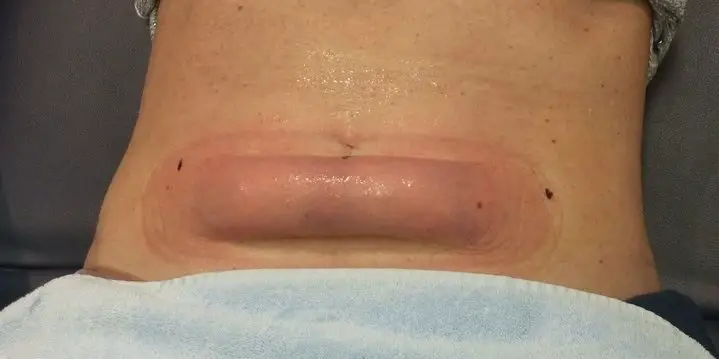
How long does a session last?
CoolSculpting is effective for eliminating problem areas of fat on the flanks, abdomen, thighs, upper arms or even that pesky double chin. Each area requires about 35-60 minutes of treatment. If you’re getting more than one area treated the entire procedure may last several hours, or you may need to plan multiple treatments.
Some clinics may also offer DualSculpting, which allows you to target two areas of your body at one time, cutting your treatment time in half.
What should I expect during recovery?
Because there are no incisions to be made, no anesthesia necessary, and no stitches requiring time to heal, the recovery period following a CoolSculpting treatment is remarkably short. There is literally no downtime at all. You’ll be able to eat and drink anything you want immediately, and go directly back to work from your doctor’s office.
Some people even schedule short treatment sessions over their lunch break. Better yet, there are absolutely no restrictions on physical activity whatsoever. In fact, exercising during and beyond your recovery period will help improve and maintain your results.
Mild pain, swelling, and numbness are the most common side effects, but medication or time off from work are generally not required. Still, about 1 in 10 patients do experience more moderate to severe pain in the days and weeks after their CoolSculpting treatment. This pain can usually be managed with over the counter medication.
How soon will I see results?
Patience is a virtue. It will take several weeks for your results to become fully apparent. Some patients see an improvement in as little as three weeks, but it usually takes about three months.
Bear in mind that results aren’t always predictable. When you treat one part of your body, it might respond differently from another treated area. This can cause some mild asymmetry. Additional treatments can be performed to even things out if necessary. Once your full final results are revealed you’ll be able to discuss further treatments if necessary.
After 90 days, patients typically see a 20-25% reduction of fat in the treated area following a single CoolSculpting session. For many patients, one treatment is enough to produce great results, provided they have realistic expectations.
Does CoolSculpting get positive reviews?
An impressive 65-75% of patients have reported a high level of satisfaction in the months following their procedure, giving it a better rating than any other non-invasive fat-reduction technique. That being said, some patients’ satisfaction begins to wane after about 6 months due to subsequent weight gain.
The fat cells that are destroyed through the CoolSculpting process will never grow back, but the cells left over are still quite capable of swelling with additional fat. Maintaining a healthy lifestyle through proper nutrition and exercise will help you to maximize your results, and make sure they last a lifetime.
In short, the results are only as permanent as your willingness to maintain them.
Negative experiences among CoolSculpting patients can occur from time to time. The most common complaints that patients voice during their recovery are related to pain. While it’s certainly true that the majority of people who have this procedure don’t feel any pain at all, those who do can experience extreme intense discomfort.
The pain that is induced when a large percentage of the nerve endings in the treated area “wake up” simultaneously can be shockingly severe. Most people can withstand the discomfort by alleviating it with 600-800 mg of Ibuprofen every few hours, but there have been some cases where prescription-strength medication has been necessary.
Perhaps the second most common negative experience that patients share is an unusual amount of bloating and swelling, usually appearing a few days after their treatment and in some cases lasting for several weeks. Some patients become so swollen that their normal clothes become uncomfortable, or simply don’t fit. This swelling is generally paired with tenderness that can feel like a bad sunburn.
Regardless, most patients’ experiences are overwhelmingly positive. When compared to the side effects and complications than can accompany other fat-reduction techniques like liposuction, most people find CoolSculpting well worth the risk.
What are the potential risks and side effects?
Although CoolSculpting has proven to be a safe treatment, some unwanted side effects have been reported by patients. These side effects tend to show up at predictable times during the recovery period.
Immediately after treatment there is the possibility of a few mild, temporary side effects occurring, including:
- Redness
- Firmness
- Swelling or bloating
- Localized numbness
- Mild bruising
- Whitening of the skin around the treatment area
- Mild to moderate pain or cramping
- Tenderness at the treatment site
- Itching or tingling sensations
These symptoms are normal, and can last up to a week. They are caused by the vacuum suction and the cold temperatures created by the CoolSculpting machine. Most of these side effects tend to go away by themselves within a matter of minutes. None require any special or additional treatment whatsoever. They only need time to subside.
In addition to the short term side effects, the treatment also carries with it a handful of more serious but rare complications:
- Late-onset pain — This is the most common complaint following treatment, occurring to less than 1% of patients. This pain can be more severe than the expected mild side effects, and usually starts at least a few of days after treatment. The pain can last for a few weeks.
- Freeze burn — First and second-degree freeze burns happen extremely rarely and should heal on their own if they actually occur. This is not frostbite, which has been reported to have occurred only once in over 2 million CoolSculpting treatments across the globe. It most likely occurred due to human error, and healed without any permanent damage to the patient’s skin.
- Vasovagal symptoms — These include dizziness, light-headedness, sweating, flushing, nausea, and even fainting. They’re caused by a sudden drop in heart rate and blood pressure. Any of these symptoms would happen either during or immediately after your treatment.
- Subcutaneous induration — In some cases, the treated area will become hard, and sometimes form distinct little bumps. This would happen a short while after your procedure, and is sometimes accompanied by mild pain and/or discomfort.
- Hyperpigmentation — Almost always harmless and temporary, patches of skins at the treatment site may become darker in colour than the skin around it. In most cases this discoloration resolves on its own.
- Hernia — CoolSculpting can sometimes cause a new hernia to form, or can make an existing hernia worse.
- Paradoxical hyperplasia — This is probably the most serious complication. It describes a visible growth of the tissue in the treated area. This usually happens about 2 to 5 months after treatment, and ordinarily needs some surgery to correct. Men seem to suffer from this more often than women, but there is at present no way to predict who might be at risk, or prevent it from happening.
Be aware that these complications are extremely rare, especially paradoxical hyperplasia (which happens in 0.0051% of treatments). In a recent review of over 300 medical articles, only a single patient reported paradoxical hyperplasia.
A follow-up appointment around the one-month point can be helpful in ensuring you’re still on the road to recovery and not experiencing any complications.
How does CoolSculpting compare to other treatments?
In recent years, the overwhelming popularity of liposuction has led to the development of a variety of non-invasive procedures to help address unsightly and unwanted extra fat.
Among other approaches, research has led to the commercialization of radio-frequency treatments, low-level laser, and high-intensity focused ultrasound. Here’s an overview of these various treatment options.
CoolSculpting vs. Liposuction
CoolSculpting is ideal for taking care of those last few stubborn areas of fat, but it can’t handle the volumes of fat dispersal that liposuction can.
Another important difference between CoolSculpting and liposuction is the risk involved. Liposuction, though routine, is a surgical procedure. That means there will be pre-op, recovery, and the possibility of some serious side effects. Liposuction also involves general anesthesia, which carries its own risks.
CoolSculpting, on the other hand, is 100% non-surgical and noninvasive. There is no cutting, no anesthesia, and the procedure requires next to no recovery time at all. There isn’t even any downtime. You can go back to work the very same day.
CoolSculpting vs. Laser Lipolysis
The differences between laser lipolysis and CoolSculpting are like the differences between fire and ice.
Where CoolSculpting uses cooling technology to freeze, crystallize, and destroy fat cells, laser lipolysis uses a high powered laser to heat and “melt” the fat cells to destroy them. They can then either be removed using a similar process to liposuction, or the body can be allowed to absorb and metabolize them. Laser treatment has the added benefit of promoting the production of collagen in the skin, causing it to firm and tighten.
There are some disadvantages to laser lipolysis over CoolSculpting. Laser lipolysis isn’t nearly as invasive as liposuction, but is still a more involved procedure than CoolSculpting, requiring a local anesthetic. There is also more of a recovery period required for “melting” away fat than freezing it, and some people may even need to take time off work. Not so with CoolSculpting.
The heat laser lipolysis uses also carries more risk than CoolSculpting’s freezing technique. The laser can have an effect on not just the fat, but blood vessels, nerves, and other internal structures. Damaging these can create more severe and prolonged numbness over the course of the healing and recovery period.
CoolSculpting vs. Velashape
The Velashape approach to fat-reduction is very different from CoolSculpting. Where CoolSculpting uses cooling to freeze away fat, Velashape uses a combination of radio frequency waves, laser energy, and a suction massage to heat and “melt away” the fat.
Velashape’s technology is older, so its safety is well proven, but it’s a less efficient method and can have unreliable results. The skin in the treated area needs to be iced often, and in rare cases can even be burned during the procedure.
Nevertheless, Velashape does have one advantage over CoolSculpting: it uses a deep tissue massage to help increase blood flow to the area. This gives the skin a nice firming and lifting effect, while also taking care of some of that unsightly cellulite.
Patients usually notice smoother and tighter skin right after the first treatment, though it can take 3 to 6 treatments to see the full results. This makes it great for areas like the thighs, butt, and upper arms, where cellulite is common. Cellulite and loose skin are two issues CoolSculpting just isn’t designed to treat.
CoolSculpting vs. Venus Freeze
Despite its name, Venus Freeze uses radio frequency energy to create heat rather than cold to eliminate fat like CoolSculpting does. The procedure shrinks fat cells by breaking down triglycerides. However, its capacity is limited in terms of fat reduction.
While Venus Freeze does heat up fat, the treatment’s overarching objective is to heat up collagen to boost its production. The skin’s elasticity is thus enhanced, and feels firmer. For this reason it is promoted more as a treatment that tightens loose skin and reduces cellulite. This makes CoolSculpting the preferable option if fat reduction is your ultimate goal.
CoolSculpting vs. Zerona
Another 100% noninvasive treatment, Zerona uses laser energy to safely “liquify” and shrink fat cells, while also tightening the skin. Erchonia, the manufacturer of Zerona, has said that the procedure has no side effects, no allergic reactions, no bruising, and is practically painless.
There is, however, one prominent disadvantage to this technique, and that is the number and frequency of treatments needed to see any real results. While some areas of fat can be completely eradicated with one CoolSculpting treatment, Zerona requires you to return to your doctor’s office for a 40-minute treatment every second day for 15 days. If you miss even one of these treatments, you may compromise your results.
Also, while CoolSculpting actually destroys and removes fat cells, Zerona may only shrink them. In the end, this means that while CoolSculpting boasts permanent results, the results from Zerona may be more fleeting.
CoolSculpting vs. SculpSure
SculpSure and CoolSculpting both share many features. Both are noninvasive, destroy fat cells, and allow the body to eliminate them through its own natural processes. The only difference is that SculpSure uses laser energy to heat the fat cells until they die, rather than freeze them.
Both treatments need a few weeks to several months for the final results to be apparent. Moreover, neither technique has any downtime or recovery period.
SculpSure has fewer side effects, however, including no bruising or marks left on the skin. Each CoolSculpting treatment can take an hour or more for each targeted area, while SculpSure, on the other hand, can treat up to 4 different locations during the same 25-minute treatment. Many patients have also reported that the actual SculpSure procedure is more comfortable than CoolSculpting because there’s no suction or numbness.
The one main advantage CoolSculpting holds over SculpSure is that it has been available for a longer period of time, and many doctors are much more comfortable with it. There is also some contention over whether heating or freezing fat cells gives the most predictable and long lasting results, but the jury is still out.
CoolSculpting vs. truSculpt
Another fat reduction treatment that uses radio frequency energy to heat up and kill fat cells, truSculpt also helps with skin tightening and cellulite. Just like CoolSculpting, once the fat cells have been destroyed by truSculpt’s radio frequency energy, they are slowly removed from the area by the body’s own processes. truSculpt uses a much smaller handheld device that can treat flat areas where CoolSculpting can’t get a good suction grip, such as the shoulders.
Similar to other treatments that use radio frequency energy, truSculpt is great for areas of loose skin. This has made it rather popular with new mothers who are looking to not only get rid of that leftover baby weight, but also tighten up the skin on their stomachs — a benefit CoolSculpting does not offer.
CoolSculpting vs. Liposonix
As its name implies, Liposonix uses sound — ultra-high frequency ultrasound — to destroy fat cells. Like some other methods, the ultrasound also works to stimulate collagen, tightening the skin above it. Liposonix is ideal for patients with at least one inch of pinchable fatty tissue, but is only effective for use on fat deposits in the abdomen.
nfortunately, while Liposonix can help you lose one pant or dress size and an inch off your waistline, it can’t be used on any other part of the body. This renders it much less versatile than CoolSculpting.
Another important factor to consider about Liposonix is that it is not a pain-free procedure. CoolSculpting can be painless, but Liposonix is always administered with a prescription for pain medication. In fact, it can be so painful that a lot of patients report being very uncomfortable during the procedure, even after taking Vicodin or Percocet.
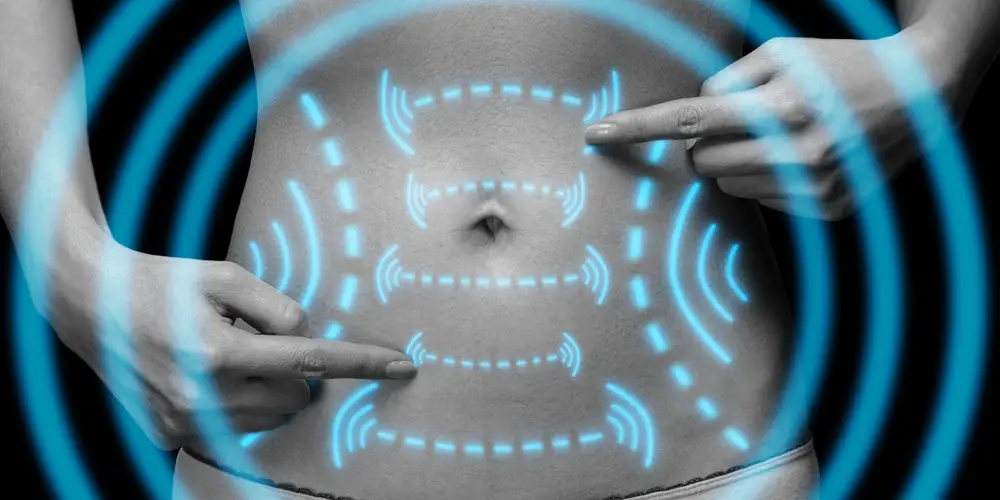
RELATED: How to Choose the Best Non-Surgical Fat Removal Treatment
What is CoolAdvantage?
Representing the gold standard in non-invasive fat reduction, CoolSculpting is a procedure of unparalleled innovation. Nonetheless, CoolSculpting has undergone significant improvements recently, rendering it even more effective for a wider range of body areas.
One recent and notable advance was the 2016 release of the CoolAdvantage applicator. CoolAdvantage delivers the trademark CoolSculpting technology at a lower temperature which reduces treatment time almost in half: safe and effective results can now be achieved in as little as 35 minutes.
The applicator itself boasts an enhanced cup design which increases direct contact with the tissue. It has a three distinct applications within the one applicator:
- The CoolFit Advantage to target vertical areas of fat such as the inner thigh
- The CoolCore Advantage which is ideal for the contours of the abdomen
- The CoolCore+ Advantage which specifically addresses the flanks
A clinical study compared the new CoolAdvantage applicator with the older CoolCore applicator and found that while both applicators demonstrated equivalent reductions of the fat layer, the CoolAdvantage design meant a 45 per cent increase in comfort for patients. A significant 85 per cent of patients who underwent treatment preferred the CoolAdvantage application.
A more recent 2017 innovation was the release of the CoolAdvantage petite applicator. The petite applicator was cleared by the FDA for use on the upper arms, making it the only non-invasive fat removal procedure available for use on this area.
“There are 29 million people in the U.S. interested in CoolSculpting, with more than 14 million expressing concern about unwanted arm fat, making arms the third most popular area for consideration of non-invasive fat reduction,” said Mark Foley, President and Chief Executive Officer of ZELTIQ who developed the new applicator.
For those looking for sleeker arms without invasive surgery, the arrival of the CoolAdvantage applicator will come as welcome news.
How much does CoolSculpting cost?
The cost of your CoolSculpting treatment can vary depending on the areas to be treated and the number of treatments that are necessary. Your chosen cosmetic doctor will create a customized treatment plan tailored to your body’s specific needs, your personal goals, and your budget.
Depending on your goals, the costs can add up quickly. The average cost is $600 per application, which covers an area roughly the size of a hand (so a muffin top or love handles would need two applications). But compared to the financial and physical cost of more invasive procedures or other “fad” solutions with no real promise or evidence of success, CoolSculpting can be a much more affordable and effective option in the long run.





